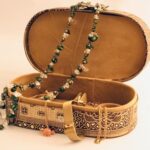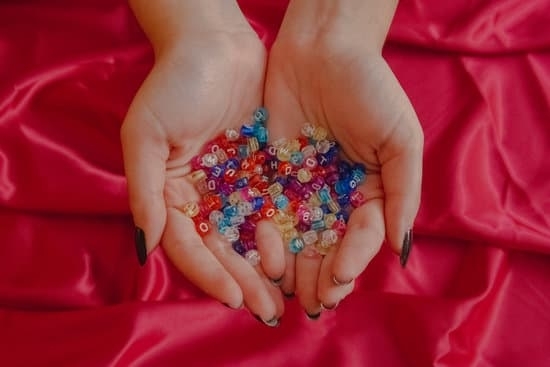Fine jewelry is an investment meant to be cherished for a lifetime. To ensure its longevity and timeless beauty, it is crucial to properly care for these precious pieces. Proper maintenance not only helps preserve their original luster but also prevents damage and prolongs their lifespan. In this article, we will explore the importance of caring for fine jewelry and the numerous benefits that come with it.
Caring for your fine jewelry goes beyond simply cleaning them occasionally. It involves understanding the specific care requirements of different materials and gemstones commonly used in fine jewelry. Each type of material demands a unique approach to cleaning, storage, and protection. By familiarizing ourselves with these specifics, we can effectively maintain the exquisite quality and radiance of our cherished pieces.
Regular cleaning is an essential part of caring for fine jewelry. However, improper cleaning techniques can cause irreversible damage. We will delve into detailed guidelines on how to clean different types of jewelry such as gold, silver, diamonds, and pearls. Additionally, we will provide recommended cleaning solutions that are safe yet effective in restoring brilliance without harming the delicate nature of these valuable gemstones.
By implementing proper storage practices, you can prevent tarnishing, scratching, and other forms of damage to your fine jewelry. We will share valuable tips on how to properly store your precious pieces using suitable containers like jewelry boxes, organizers, and travel cases. Furthermore, we will discuss best practices when it comes to wearing your fine jewelry to minimize wear and tear.
Through this comprehensive guide on caring for fine jewelry, you will gain practical insights into preserving the beauty and longevity of your treasured possessions. From daily care tips to professional maintenance advice – we have got you covered. So join us in this journey as we delve into the world of fine jewelry care and discover the secrets behind maintaining its everlasting allure.
Understanding the different types of fine jewelry
Fine jewelry encompasses a wide range of materials and gemstones, each with its own unique characteristics and care requirements. Understanding these differences is crucial for properly maintaining and preserving the beauty of your precious pieces.
One of the most commonly used materials in fine jewelry is gold. Gold jewelry can be made from either pure gold or a combination of gold and other metals, such as silver or copper. It is important to note that pure gold is a relatively soft metal and is more prone to scratches and dents. Therefore, it is often alloyed with other metals to increase its durability.
Another popular material for fine jewelry is silver. Silver jewelry adds an elegant touch to any outfit but requires extra care due to its tendency to tarnish over time. Tarnishing occurs when silver interacts with sulfur compounds in the air or on the skin, resulting in a darkened appearance. Regular cleaning and proper storage can help prevent tarnish and extend the lifespan of your silver jewelry.
In addition to different materials, fine jewelry also incorporates various gemstones, each requiring specific care considerations. For example, diamonds are renowned for their hardness and durability but can still chip or scratch if subjected to strong impacts. Proper cleaning and storage practices are essential for maintaining the brilliance of diamonds. Pearls, on the other hand, are delicate organic gems that require gentle care to avoid scratches or damage from exposure to chemicals.
| Material/Gemstone | Care Requirements |
|---|---|
| Gold | Regular cleaning; avoid exposure to harsh chemicals; store individually in soft pouches |
| Silver | Frequent cleaning; avoid contact with substances that cause tarnish (e.g., perfumes); store in airtight containers or tarnish-resistant bags |
| Diamonds | Regular cleaning; avoid exposing to harsh chemicals or high temperatures; store separately to prevent scratching |
| Pearls | Gently wipe after each use; avoid contact with perfumes, lotions, and chemicals; store in a soft pouch or wrapped in tissue paper |
Daily care tips for fine jewelry
Daily care is essential for maintaining the beauty and longevity of your fine jewelry. By following some practical advice on how to clean, store, and protect your precious pieces, you can ensure that they remain in excellent condition for years to come.
Firstly, it is important to clean your jewelry regularly to remove any dirt, oils, or residue that may accumulate. You can use a soft toothbrush and mild soap to gently scrub the jewelry, making sure to reach all the crevices. Avoid using harsh chemicals or abrasive cleaners as they can damage the delicate materials. After cleaning, rinse the jewelry thoroughly with warm water and pat it dry with a soft cloth.
When it comes to storing your fine jewelry, proper organization is key. Ideally, store each piece separately in a soft pouch or individual compartment to prevent scratching and tangling. If you don’t have separate storage options, you can also wrap each piece in a soft cloth or tissue paper before placing them together in a jewelry box. Keep your jewelry away from direct sunlight and excessive humidity as these conditions can cause tarnishing or fading of certain materials.
In addition to cleaning and storage, protecting your fine jewelry on a daily basis is crucial. Avoid wearing your pieces during activities such as exercising or doing household chores that may expose them to potential damage. It is also advisable to remove your jewelry before swimming or using any chemicals such as lotions or perfumes. Chemicals can react with certain metals or gemstones and cause discoloration or other forms of damage.
By following these daily care tips for your fine jewelry, you can keep them looking stunning and pristine for years to come. Remember, investing just a little time and effort into maintaining your valuable pieces will pay off in the long run by preserving their beauty and ensuring their longevity.
Cleaning techniques for fine jewelry
Proper cleaning is essential for maintaining the beauty and shine of your fine jewelry. However, different types of jewelry require specific cleaning techniques to ensure their longevity and prevent any damage. In this section, we will provide you with a detailed guide on how to clean different types of jewelry, including gold, silver, diamonds, and pearls, along with recommended cleaning solutions.
When cleaning gold jewelry, it is important to be gentle to avoid scratching or damaging the piece. Start by mixing a few drops of mild dish soap with warm water. Soak the gold jewelry in this solution for about fifteen minutes. Then, using a soft-bristled brush or an old toothbrush, gently scrub the jewelry to remove any dirt or residue. Rinse it thoroughly under warm running water and use a soft cloth to dry it before storing.
For silver jewelry, tarnish can be a common problem. To remove tarnish from silver, create a mixture of equal parts baking soda and water to form a paste-like consistency. Apply this paste onto the tarnished areas using a soft cloth or sponge and rub gently in circular motions.
Rinse the jewelry under warm water and dry it completely using a soft cloth. It’s important to note that this method should not be used on silver pieces that have gemstones or pearls attached as the paste may damage them.
Diamonds are known for their brilliance but can become dull over time due to oils and dirt buildup. To clean diamond jewelry, create a solution using 1 part household ammonia and 3 parts water in a bowl. Soak your diamond pieces in this solution for approximately twenty minutes, then gently scrub them with a soft brush if needed. Rinse the jewelry under running water and use a lint-free cloth to dry it thoroughly.
Pearl necklaces or earrings require extra care as pearls are delicate gemstones that can easily be damaged. To clean pearls, use a soft damp cloth to wipe away any dirt or residues. Avoid using any harsh chemicals or detergents, as they can damage the pearls’ luster. After cleaning, lay the jewelry flat on a soft cloth to air dry completely before storing.
By following these cleaning techniques tailored for specific types of jewelry, you can ensure that your fine pieces retain their beauty and shine for years to come. Remember to always exercise caution and gentle handling when cleaning your precious items.
Storing fine jewelry
Storing fine jewelry is an essential part of maintaining its beauty and preventing damage. Proper storage can help prevent tarnishing, scratching, and tangling of delicate chains or gemstones. Here are some tips on how to properly store your jewelry:
- Separate and organize: To prevent scratches and tangles, store each piece separately. Use individual compartments or small zip-top bags to keep earrings, rings, bracelets, and necklaces separate from each other. This will also make it easier to find the specific piece you’re looking for without having to untangle a bunch of necklaces.
- Choose the right container: Invest in a jewelry box or organizer that is specifically designed for storing jewelry. Look for one with compartments or dividers to keep each piece separate and protected. Soft lining such as velvet or felt can help prevent scratching. Avoid storing your jewelry in plastic bags, as they can trap moisture and cause tarnishing.
- Consider anti-tarnish solutions: Tarnishing is a common issue with fine jewelry, especially pieces made of silver or silver-plated materials. To prevent tarnishing, use anti-tarnish strips or pouches in your jewelry storage container. These strips contain agents that absorb moisture and sulfur compounds that cause tarnish.
- Store in a cool, dry place: Heat and humidity can accelerate tarnishing and damage to your jewelry. Store your jewelry in a cool, dry place away from direct sunlight or extreme temperature fluctuations. Avoid storing it in the bathroom where it could be exposed to moisture from showers or steam.
Traveling with your fine jewelry requires additional precautions to ensure its safety and security:
- Carry-on vs checked luggage: Always carry your fine jewelry with you on the plane rather than packing it in checked luggage. This way, you have better control over its safety and lower the risk of loss due to theft or mishandling.
- Use a travel case: Invest in a travel case specifically designed for jewelry. Look for a compact and sturdy case with individual compartments or pouches to keep each piece separate and secure during transit.
- Take photos and make a list: Before traveling, take photos of your jewelry and make a list of the pieces you’re taking with you. This will help in identifying any missing jewelry or if anything gets lost or stolen while traveling.
Following these storage tips and taking precautions while traveling will help ensure that your fine jewelry remains in excellent condition for years to come. Remember to maintain regular inspections, repairs, and professional cleanings as mentioned in the article outline to further protect your precious pieces.
Best practices for wearing fine jewelry
Wearing fine jewelry is a special way to express your style and showcase your personal taste. However, it is important to remember that these precious pieces require proper care and maintenance to ensure their longevity and beauty. In this section, we will explore some best practices for wearing fine jewelry to minimize damage and wear on your pieces.
One important tip is to remove your jewelry during certain activities that may expose them to potential damage. For example, it is best to take off your jewelry before engaging in physical activities such as exercising, playing sports, or doing household chores. This will help prevent any accidental bumps or scratches that could occur while wearing your jewelry.
Additionally, it is important to avoid exposing your fine jewelry to chemicals that can cause harm and damage. Chemicals such as perfumes, lotions, hair products, cleaning agents, and even certain cosmetic products can tarnish or corrode the metals in your jewelry and negatively affect gemstones. To protect your pieces, always apply any cosmetics or beauty products before putting on your jewelry. It’s also a good idea to remove your jewelry when swimming in chlorinated pools or hot tubs.
For frequently worn items like rings or bracelets, it is important to regularly inspect and clean them. Over time, oils from our skin can build up on the surface of the jewelry, affecting their shine and clarity. To keep them looking their best, simply use a soft cloth or brush with mild soapy water to gently clean the piece. Be sure to dry the item thoroughly before wearing it again.
| Activity | Tips |
|---|---|
| Physical activities | Take off jewelry before exercising, playing sports, or doing household chores to prevent accidental bumps and scratches. |
| Chemicals exposure | Avoid exposing jewelry to chemicals such as perfumes, lotions, cleaning agents, and chlorine, as they can tarnish or corrode the metals and gemstones. |
| Cleaning frequently worn items | Regularly inspect and clean items like rings and bracelets to remove oils from the skin that can build up on the surface of the jewelry. |
Professional maintenance for fine jewelry
The Importance of Routine Inspections
Routine inspections are an essential part of caring for fine jewelry. By regularly inspecting your jewelry, you can identify any potential issues before they escalate and cause significant damage. A professional jeweler is trained to spot signs of wear, loose stones, or compromised settings that may not be visible to the untrained eye. Through regular inspections, you can ensure that your jewelry remains in optimal condition and prevent costly repairs or even loss of valuable pieces.
Recommended Timelines for Professional Maintenance
The frequency of professional maintenance for your fine jewelry depends on several factors, such as the type and quality of materials used, how frequently the piece is worn, and the style or design. As a general guideline, it is recommended to have your jewelry professionally inspected and cleaned at least once a year. This ensures that any minor issues are addressed promptly and that your pieces maintain their luster and brilliance.
However, there may be exceptions. For instance, engagement rings typically require more frequent maintenance due to their regular wear and exposure to potential damage. It is advisable to consult with a reputable jeweler who can provide personalized recommendations based on the specific characteristics of your jewelry.
The Benefits of Consulting with Experts
Consulting with experts in fine jewelry can offer numerous benefits when it comes to maintaining and caring for your precious pieces. Jewelers have extensive knowledge and experience in handling different types of materials and gemstones, allowing them to provide tailored advice on how to best care for each item in your collection.
In addition, professionals have access to specialized equipment and cleaning solutions that are specifically designed for cleaning fine jewelry without causing any damage. They also possess the skills required for intricate repairs or adjustments that may be needed over time.
Moreover, seeking professional assistance ensures that you do not inadvertently void any warranties or insurance coverage associated with your jewelry. In some cases, manufacturers require routine maintenance and inspections performed by authorized jewelers to uphold the terms of these agreements. By entrusting your jewelry to experts, you can have peace of mind knowing that your pieces are in capable hands and will receive the care they deserve.
Protecting fine jewelry while traveling
Whether you’re going on a vacation or a business trip, it’s important to ensure the safety and security of your fine jewelry while traveling. Follow these essential tips and precautions to protect your precious pieces and keep them in pristine condition throughout your journey.
Firstly, when packing your jewelry, always store each piece separately in a soft pouch or individual compartment to prevent tangling, scratching, or damage. If possible, carry your jewelry with you in your handbag or carry-on luggage rather than checking it in with your main suitcase. This way, you can keep an eye on it at all times and reduce the risk of loss or theft.
It’s also advisable to avoid wearing too much jewelry while traveling. Instead, opt for a few versatile pieces that can be worn multiple ways to minimize the chances of misplacing or losing them. Keep in mind that certain destinations may have specific regulations regarding the wearing of valuable items in public, so be aware of local customs and guidelines.
Another important tip is to consider investing in a portable safe or travel case specifically designed for storing jewelry. These cases often feature secure locks and padding to protect against impact and damage. Additionally, if you’re staying at a hotel, take advantage of their in-room safes or deposit boxes for added security when you’re not wearing your jewelry.
Lastly, don’t forget about insurance when it comes to protecting your fine jewelry while traveling. Before embarking on your trip, check with your insurance provider if your policy covers loss, theft, or damage during travel. If not, consider purchasing additional coverage for peace of mind.
By following these essential tips and precautions for protecting fine jewelry while traveling, you can enjoy your trip without worrying about the safety and security of your precious pieces. Remember that proper care extends beyond daily maintenance and includes taking proactive steps to safeguarding your jewelry wherever you go.
Troubleshooting common issues with fine jewelry
Addressing Loose Stones
One common issue that fine jewelry owners may encounter is loose stones. Whether it’s a diamond in a ring or a gemstone in a pendant, a loose stone can be worrisome. However, there are steps you can take to address this issue before seeking professional assistance.
If you notice a loose stone in your jewelry, the first thing to do is avoid wearing it until the problem is resolved. Continued wear can further loosen the stone or even cause it to fall out completely. Take a close look at the setting and try gently pushing the stone back into place with your finger or with a pair of tweezers. Be careful not to apply too much pressure as you could potentially damage the jewelry.
If gently pushing the stone doesn’t secure it back into place, you may consider using jeweler’s glue or adhesive designed specifically for jewelry repair. Carefully apply a small amount of adhesive to the base of the stone and use tweezers or a toothpick to adjust its position as needed. Keep in mind that this fix is temporary and should be seen as a stop-gap measure until you can have your jewelry professionally repaired.
Repairing Damaged Clasps
Another common issue with fine jewelry is damaged clasps, which can cause insecurity and potential loss of precious pieces. If you find that your necklace or bracelet clasp has become loose or non-functional, there are DIY fixes that you can try at home.
One option is to use pliers to tighten or adjust the clasp mechanism. Gently squeeze the prongs together if they’ve become loose, ensuring they align properly when closing the clasp. If necessary, use pliers to bend any misaligned parts back into place.
If your clasp needs more extensive repair, consider purchasing replacement clasps from craft stores or specialized online retailers. With basic tools like jump rings and split rings, you can replace a damaged clasp yourself. Just be sure to select a replacement clasp that is appropriate for the size and weight of your jewelry piece.
Restoring Faded Metal
Over time, fine jewelry pieces may start to lose their original shine and appear faded. This can be particularly noticeable in gold or silver jewelry. While professional cleaning from a jeweler can help restore the luster, there are also DIY methods you can try at home.
To restore faded metal, create a gentle cleaning solution using warm water and mild soap. Immerse your jewelry in the solution for a few minutes, then use a soft toothbrush or cloth to gently scrub away any dirt or grime. Rinse thoroughly with clean water and pat dry with a soft cloth.
For more stubborn tarnish or discoloration on silver jewelry, you can use a specialized silver polishing cloth or silver dip solution. Follow the product instructions carefully to ensure proper usage and avoid damage to gemstones or delicate parts of your jewelry.
However, it’s important to note that these DIY methods are best suited for minor restoration purposes. For significant wear or deeply oxidized metals, it is recommended to consult with a professional jeweler who has experience in restoring fine jewelry.
By addressing common issues such as loose stones, damaged clasps, and faded metal yourself when appropriate, you can extend the life of your fine jewelry and keep it looking its best. However, it’s essential to know when DIY fixes are not sufficient and when it’s time to seek professional assistance for more complex repairs or restoration work.
Conclusion
In conclusion, caring for fine jewelry is essential for preserving its beauty and longevity. By following the tips and techniques outlined in this article, you can ensure that your precious pieces remain in pristine condition for years to come.
Firstly, it is important to understand the different types of fine jewelry and their specific care requirements. Whether you have gold, silver, diamonds, pearls, or other gemstones, each material requires proper cleaning and maintenance techniques. By familiarizing yourself with these requirements and using recommended cleaning solutions, you can keep your jewelry looking its best.
Storing your fine jewelry correctly is another crucial aspect of proper care. Tarnishing, scratching, and damage can occur if items are not stored properly. Investing in a quality jewelry box or organizer, as well as travel cases for when you are on the go, will help protect your pieces from harm.
Additionally, it is important to practice good habits when wearing fine jewelry. Removing your jewelry during certain activities and avoiding exposure to chemicals will help minimize damage and wear on your pieces. Regular inspections, repairs, and professional cleanings are also vital for maintaining the integrity of your jewelry.
Frequently Asked Questions
How do you take care of fine jewellery?
Taking care of fine jewellery involves several important steps. Firstly, it is crucial to store your pieces properly when they are not being worn. This can be done by placing them in separate compartments of a jewellery box or using soft pouches or cloth bags to prevent scratching.
Secondly, it is advisable to clean your jewellery regularly to maintain its shine and brilliance. This can be achieved by using a mild soap and warm water solution or specialized jewellery cleaning products, while avoiding harsh chemicals that may damage the precious metals or gemstones. Lastly, it is recommended to remove jewellery before engaging in activities such as swimming, exercising or household chores to protect it from potential damage.
How long does fine jewelry last?
The lifespan of fine jewellery can vary depending on various factors such as the quality of materials used, the level of care it receives, and the frequency of use. High-quality fine jewellery made with durable materials such as gold, platinum or high-grade silver can last for generations if well-maintained.
However, certain factors like wear and tear over time, exposure to harsh chemicals or extreme conditions, accidents, or improper storage may impact the longevity of the jewelry. Regular maintenance and periodic inspections by a professional jeweler can help identify any potential issues and ensure that your fine jewellery lasts for many years.
How do you keep jewellery in good condition?
Keeping your jewellery in good condition requires regular attention and some simple practices. One essential step is to avoid exposing your jewelry to harsh chemicals such as chlorine, bleach or strong cleaning solutions that can tarnish metals or damage gemstones. It is also important to remove your jewelry before engaging in activities like swimming, exercising or household chores that may expose it to unnecessary risks or potential damage.
Storing each piece separately in a cool and dry place will help prevent scratches and minimize oxidation processes that lead to tarnishing. Cleaning the jewelry periodically using gentle methods like soft brushes or cloths specifically designed for delicate materials will help retain their shine and beauty over time. Finally, having your jewellery inspected and serviced by a professional jeweler on a regular basis is recommended to address any issues, such as loose stones or damaged clasps, before they worsen.

Welcome to my jewelry blog! My name is Sarah and I am the owner of this blog.
I love making jewelry and sharing my creations with others.
So whether you’re someone who loves wearing jewelry yourself or simply enjoys learning about it, be sure to check out my blog for insightful posts on everything related to this exciting topic!





